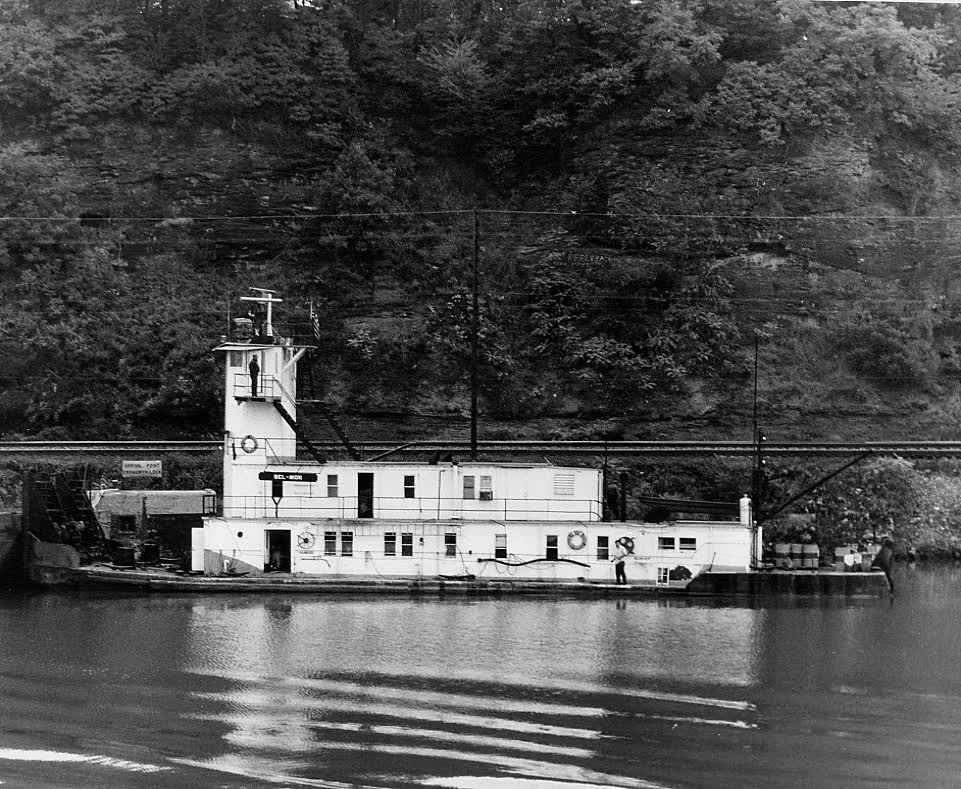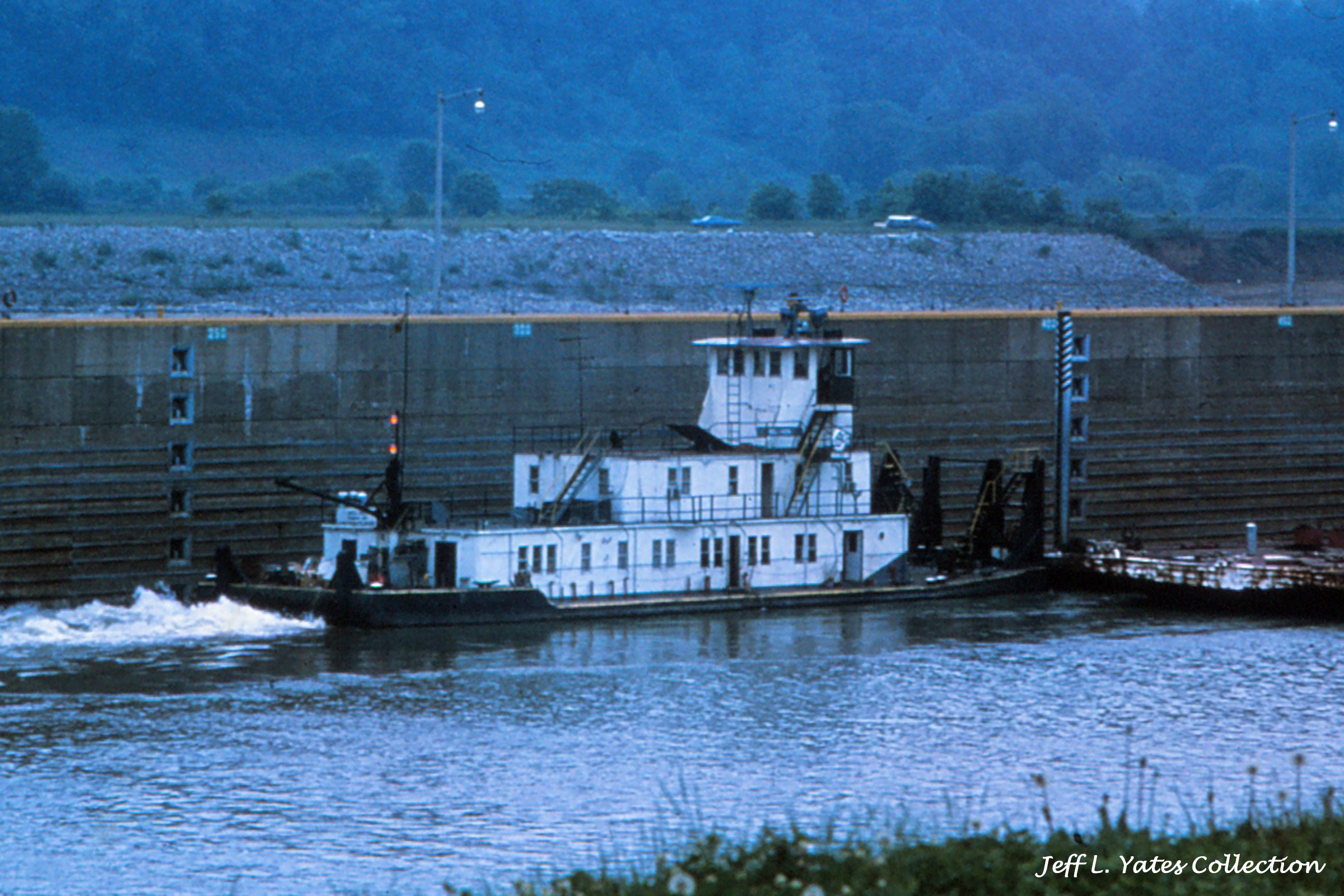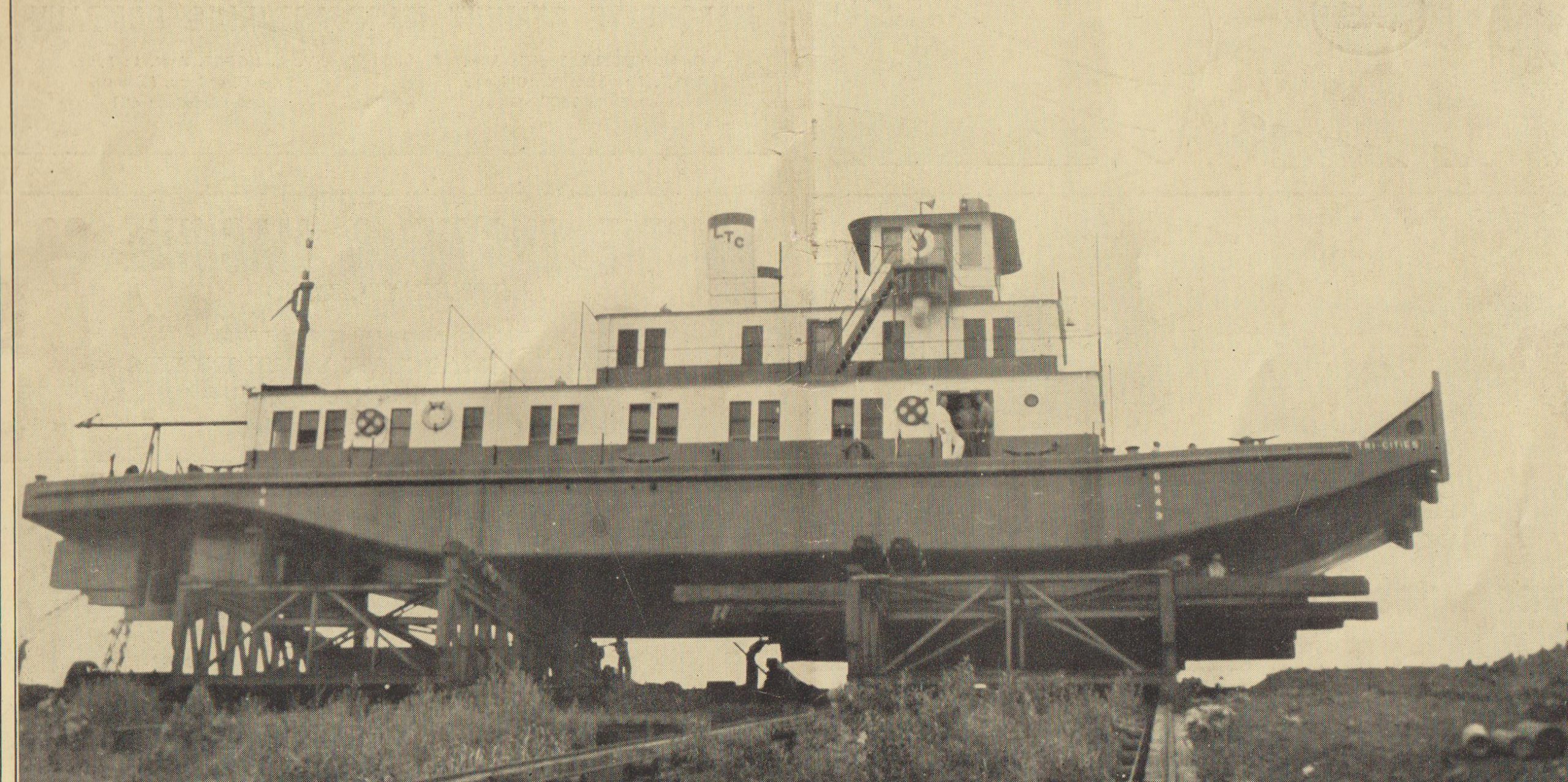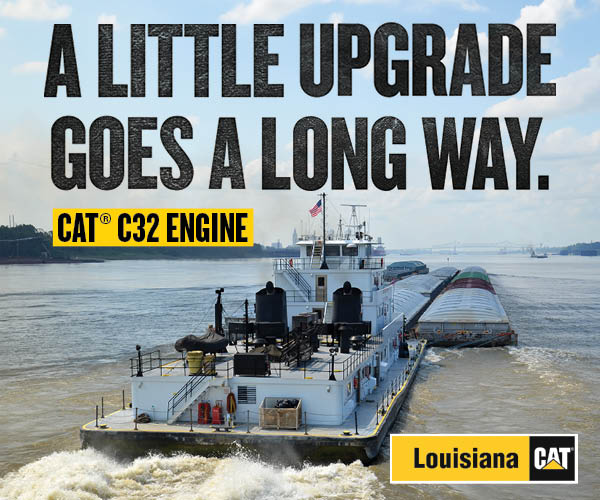The last column dealt with the lead vessel of three that the Lake Tankers Corporation ordered from St. Louis Shipbuilding & Steel Company. That boat was the 1,200 hp., twin-screw Twin Cities, powered by two Fairbanks-Morse direct reversing diesel engines. The Twin Cities entered service in April 1940, and the second boat, the Midwest Cities, a 400 hp., single-screw boat that was also F-M powered, went into operation in late June of that year.
The third boat was named Tri-Cities. A photo of Tri-Cities still on the ways prior to launch was featured in a St. Louis Ship ad on the front cover of the August 24, 1940, issue of The Waterways Journal. The St. Louis news column in the same issue, written by Andrew Franz, described the trials of the new vessel. Attending the trials were Capt. Oscar Lane and F.G. Lampe of Lake Tankers, R.W. Ritchie of the American Bureau of Shipping, H.L. Hilleary and J.E. Barthold of Fairbanks, Morse and Company and Herman Pott, E.M. Enslin and Arthur Parsons of St. Louis Ship.
The crew of the new Tri-Cities was listed as Capt. Arnold Tinkey, master; Loren Williams, pilot; Robert Mensing, chief engineer; K.H. McAvoy, first assistant engineer; and Eldon Newt, mate. It will be of interest to many today to know that the master, Capt. Albert Tinkey, was the father of well-known river industry executive and advocate Capt. Jerry Tinkey. Lake Tankers hired him while the boats were under construction, but while he was waiting for the Tri-Cities to come out, he had been working on the Alice M. Tyler (WJ, August 14, 2023).

The October 19, 1940, issue of The Waterways Journal again had a photo of the new vessel on the front cover in a St. Louis Ship ad, this time in the river and posed in a “glamour shot.” Page eight of the same issue carried a detailed description of the machinery aboard the Tri-Cities. The piece in the August 24 issue stated that the hull was 100 by 30, and in this piece, it was shown as being 110 feet long overall. The two engines were Fairbanks-Morse 5-cylinder, 12-inch bore, 15-inch stroke diesels rated 500 hp. each at 400 rpm. They turned 72-inch, 4-blade, cast steel propellers.
The only mention of the quarters stated, “The Tri-Cities is well equipped and arranged for the comfort of the crew. Quarters are clean and light, heated in winter and ventilated in summer.” The galley was described as “attractively finished and lighted and equipped with a Monel metal sink, oil-fired stove, electric coffee maker and a large mechanical refrigerator.” As built, the boat had a full lower cabin, an upper cabin about half that length, a squarish pilothouse atop that and two smokestacks behind the pilothouse.
The Tri-Cities joined the other two Lake Tankers boats in towing petroleum products on the Upper Mississippi River. When the season closed on the Upper, the boats could be found on the Lower Mississippi, the Ohio or Tennessee rivers. St. Louis Ship installed kort nozzles on the Tri-Cities in 1946. Other modifications may have been made as well, since later photos show the stern to be raised higher than it was originally. In later years, the length of the boat was listed as 114 feet, rather than the 110 reported in October 1940.
In 1951, the Tri-Cities was repowered with a pair of GM 12-567A engines totaling 1,800 hp. In 1958, the owning firm became National Marine Service Inc., St. Louis. The 1967 edition of the Inland River Record shows the boat with a retractable pilothouse, but by the 1970 edition that is no longer referenced. An undated photo by the late Dan Owen pictures a pilothouse much smaller than the original that is farther forward. It also looks as if the retractable has been made stationary. Additionally, the tow knees have very tall extensions, and the upper cabin has been stretched aft. Based on a photo from the early 1970s, this same pilothouse was made much taller.

In March 1972, the Tri-Cities was sold to Bel-Mon Towing Company, Powhatan, Ohio, and renamed Bel-Mon. After this sale, the boat was rebuilt at Point Pleasant Marine, Point Pleasant, W.Va., where the tall pilothouse was removed and replaced by a more conventional house. In January 1977, it was sold to G&C Towing of Point Pleasant, and in 1990 it was transferred to Kanawha River Towing, also of Point Pleasant.
In the pilothouse of the Bel-Mon, there had been only two steering levers, one for steering and the other for flanking. This writer was told that after the Capt. Jack Loomis (originally the Peace for Union Barge Line, see WJ, October 3, 2022) was retired and dismantled in 1988-89, the four beautiful brass levers from its pilothouse were placed on the Bel-Mon.
In 1995, the boat was sold to Egan Marine Corporation, Lemont, Ill., and renamed David E. In 1996, it was renamed the Carl E. The 2007 Inland River Record has the Carl E in the Off The Record section, stating that it was dismantled in 2006 after some 66 years of service.
Featured image caption: The new mv. Tri-Cities prior to launching in a St. Louis Ship advertisement on the front cover of the August 24, 1940, issue of The Waterways Journal.




